“This is the Body that Made these Works”: Joy Labinjo’s invigorating practice knows no bounds
Whether its self-portraits of deep personal intimacy or paintings that present a macro historical and sociological overview, the celebration of the Black experience in Britain remains central to Joy Labinjo’s oeuvre. Here, she talks to Limna, about the basis of her thriving practice.
Joy Labinjo has fast become renowned for her large-scale figurative paintings that are distinguished by their use of a flattened perspective and vivid colours to create sculptural compositions, and for their wholehearted celebration of Black communities in Britain. Driven by the lack of representation in art history and history books, she has evolved from reimagining happy, every day moments from her family’s photo albums to addressing race relations, past and present. Yet, regardless of where her sourced images come from, there’s always an arresting warmth to her work that stems from a profound engagement with the importance of belonging.
![]() Joy Labinjo, It has always been home, 2020 (Oil on canvas, 180x200cm). © Joy Labinjo. Courtesy of Tiwani Contemporary.
Joy Labinjo, It has always been home, 2020 (Oil on canvas, 180x200cm). © Joy Labinjo. Courtesy of Tiwani Contemporary.
Born in east London to Nigerian parents, Labinjo did her BA at Newcastle upon Tyne University, where she won the coveted Woon Art Prize in 2017. Her previous solo shows include Baltic Centre for Contemporary Art in Gateshead and The Breeder Gallery in Athens and her public commission for Art on the Underground, 5 More Minutes (2021) currently welcomes commuters to Brixton tube in London. Limna’s data confirms that Labinjo is a rapidly rising artist whose career has seen a 13 percent rise in Momentum over the past three years, and that she has a promising Cultural Recognition of 45/100 despite a relatively short exhibiting career length of 6 years.
Represented by Tiwani Contemporary, one of London’s leading African art galleries, Labinjo’s Full Ground is the inaugural show at its new Lagos space and sees the artist become her own subject through a series of nudes that speak to self-love and a rejection of the patriarchal gaze. Meanwhile her show at Cardiff’s Chapter Arts Centre, Ode to Olaudah Equiano, hails the world of the Black Georgian. Limna talks to Labinjo about her thriving and ever-evolving practice.
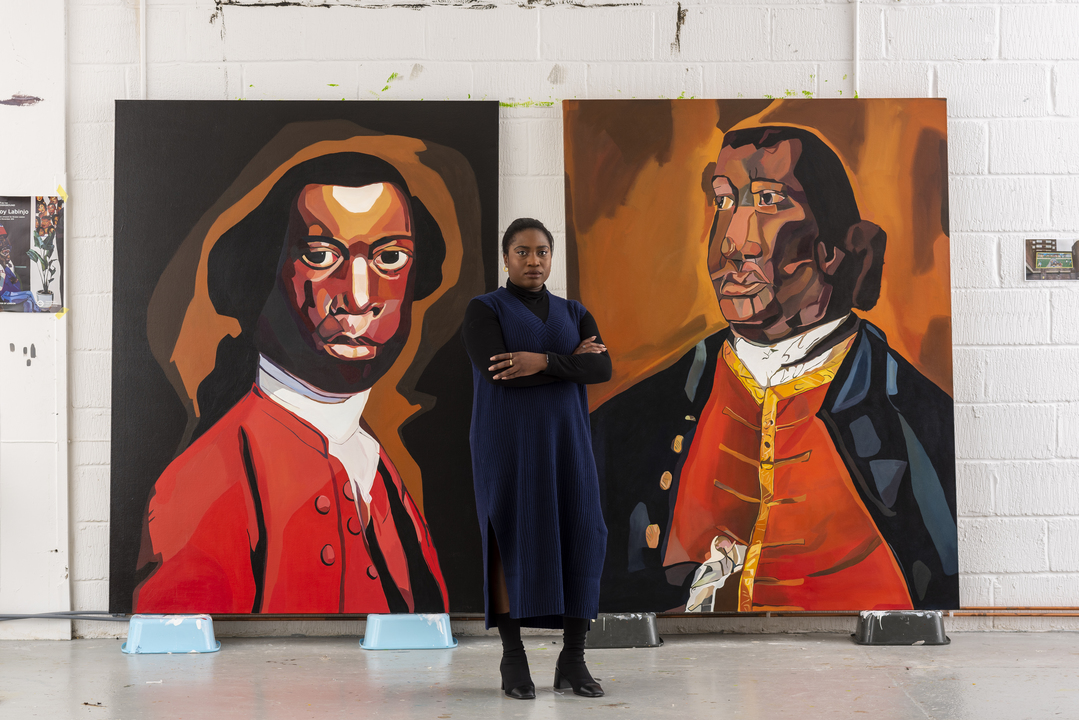 Portrait of Joy Labinjo. Courtesy Chapter Arts Centre.
Portrait of Joy Labinjo. Courtesy Chapter Arts Centre.
You rose to prominence with your portraits taken from old family photos and since then your subject matter has become more overtly political. Can you talk us through that journey?
I knew I wanted to experiment and make my practice more contemporary. In January 2020 I started doing portraits of my friends, some of whom were white. I wasn’t sure how it would read but I really enjoyed the work of Alice Neel and the freedom she had in just painting the world around her, which includes people of multiple races. So, I made three double portraits in a similar style to the family portraits, which still focused on colour and pattern.
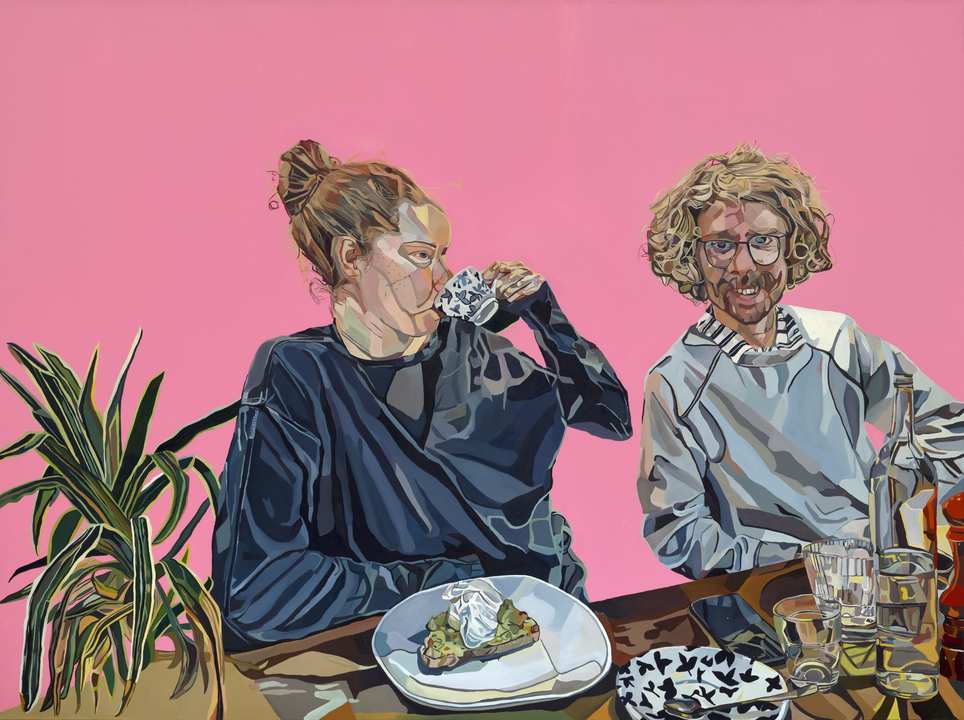 Joy Labinjo, Breakfast with Violet and Adam, 2020 (Oil on canvas, 150x200cm). © Joy Labinjo. Courtesy of Tiwani Contemporary.
Joy Labinjo, Breakfast with Violet and Adam, 2020 (Oil on canvas, 150x200cm). © Joy Labinjo. Courtesy of Tiwani Contemporary.
Then the pandemic happened, and the death of George Floyd happened, leading to works such as Enough is Enough (2020) of Black Lives Matter protestors and The Real Thugs of Britain (2020) depicting white police officers.
I felt really angry that so many white people were just realising that racism was still present when people of colour have been navigating racism their whole lives. There were discussions happening around George Floyd’s killing and I wanted to address that so I took a step back and began thinking about colonisation, which isn’t really acknowledged in history lessons at school, and started making work in simple terms.
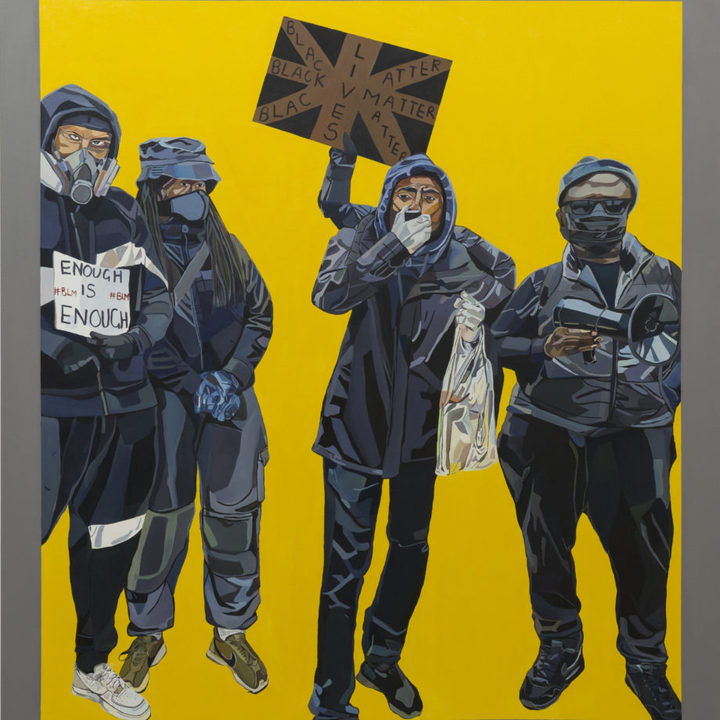
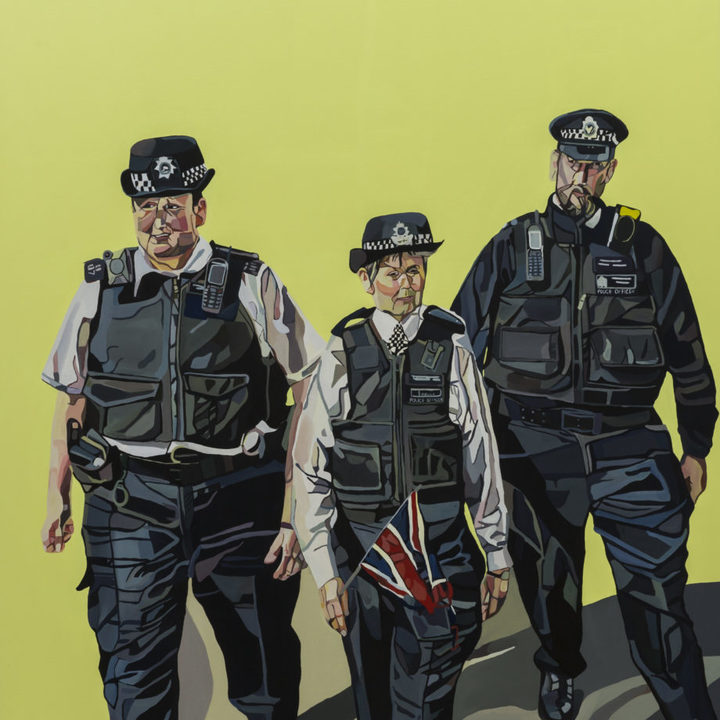
The subsequent works stemmed from learning about Sarah Forbes Bonetta and other Black Edwardians and trying to correct the narrative that Black people arrived in Great Britain with the Windrush. Then I went back further to the 18th century and read the memoir The Interesting Narrative of the Life of Olaudah Equiano and David Olusoga’s Black and British: A Forgotten History, to learn about Ignatius Sancho and other figures of that time.
Which brings us to your new show at Chapter Arts Centre, Ode to Olaudah Equiano, a body of work that paints back this missing history.
Some works show people who were Equiano’s contemporaries and some are still lifes that help the viewer place the period. I’ve also made some paintings of the sea. I’ve been reading Christina Sharpe’s In The Wake and there’s a line that mentions how the enslaved were thrown overboard the ships and barely anything made it to the bottom without being broken up or eaten, so I’m thinking about all the lives lost in the sea. Equiano and Sancho admit that they were the lucky ones, they were enslaved but managed to be free.
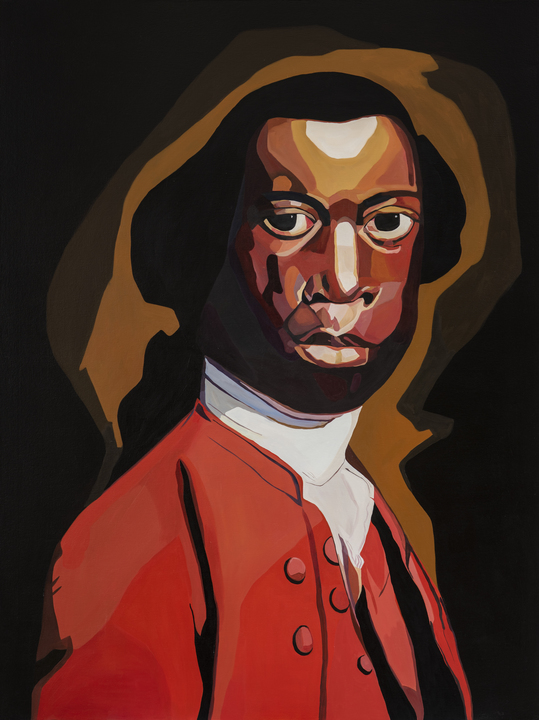
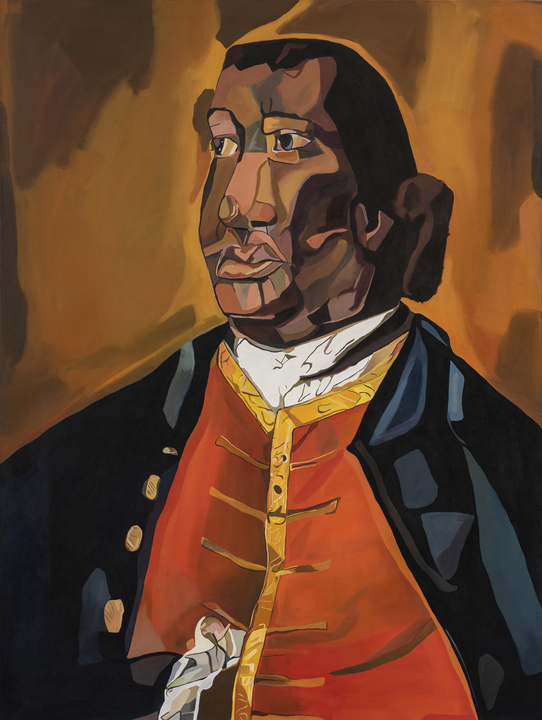
What did you take from historical paintings of this period, which rarely featured Black people other than as servants or minor figures?
The only available image of Sancho is by Thomas Gainsborough and the paintings of Equiano are disputed. There’s one of a man in a red coat that I thought was him but actually isn’t, which gave me conviction that this was an important show to do. Some of the portraits have been taken from engravings and I’ve made up a portrait of Sancho’s wife. She doesn’t exist in paintings so I wanted to paint what I imagine her to look like.
Your Tiwani Contemporary show, Full Ground, is comprised entirely of nude self-portraits. How did this idea come about?
Ever since art school, I’ve always gone back to nude paintings of myself when I’m figuring things out. During the pandemic when I was home for a bit, I started doing them again. I wasn’t sure what it would mean to show them but I thought the Lagos show felt like a good chance to explore them.
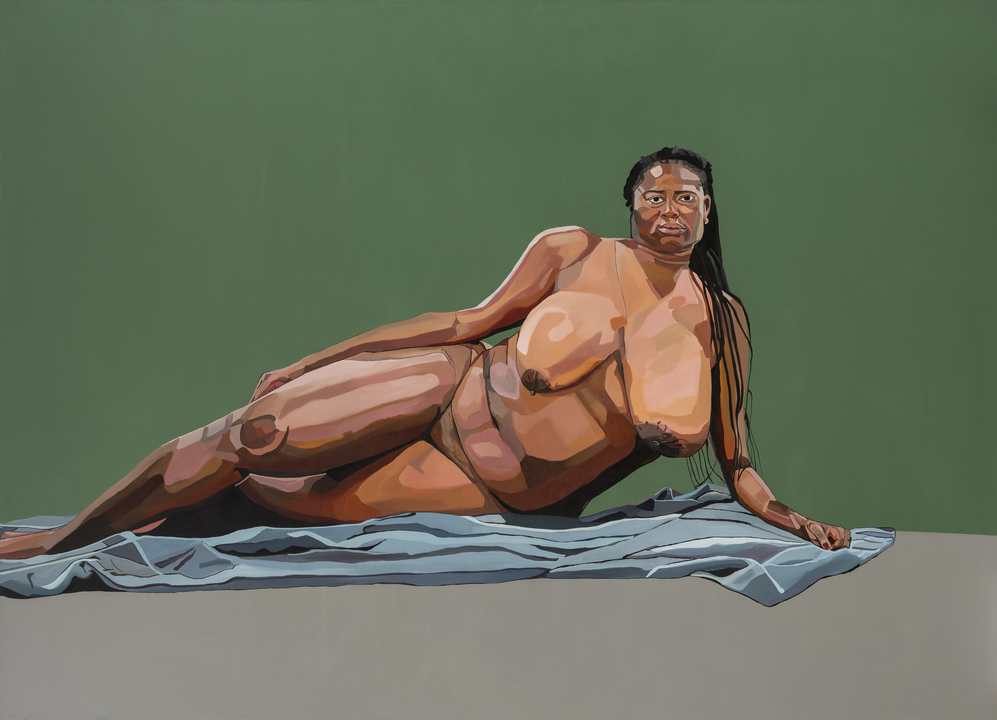 Joy Labinjo, Terrfa Firma VII, 2022 (Oil on canvas, 180x250cm). © Joy Labinjo. Courtesy of Tiwani Contemporary.
Joy Labinjo, Terrfa Firma VII, 2022 (Oil on canvas, 180x250cm). © Joy Labinjo. Courtesy of Tiwani Contemporary.
How did your intentions evolve as the paintings took shape?
I knew that I didn’t want them to be perceived as sexy or related to sex at all. They are quite frank paintings of the body. I was thinking about a Black woman’s body taking up space and celebrating the imperfections like breasts that sag and visible stretch marks. I knew it could be problematic showing this work in Lagos because there’s a lot of shame put on women regarding their bodies and how much skin is acceptable to show. So, I made these works as a middle finger to that.
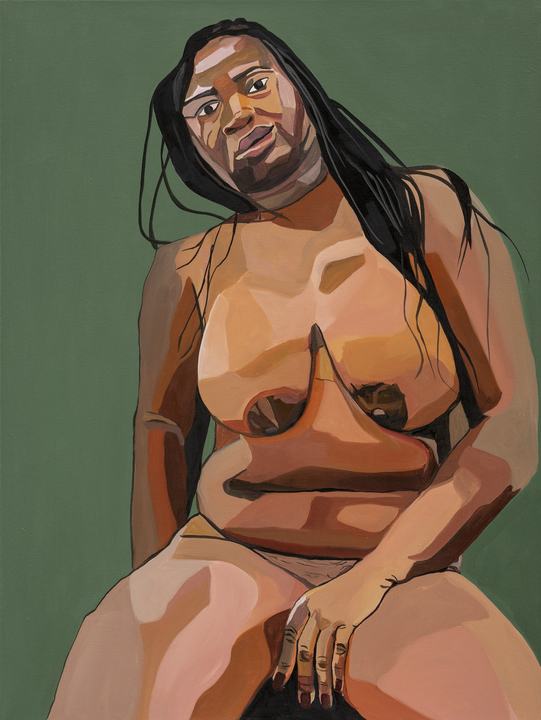
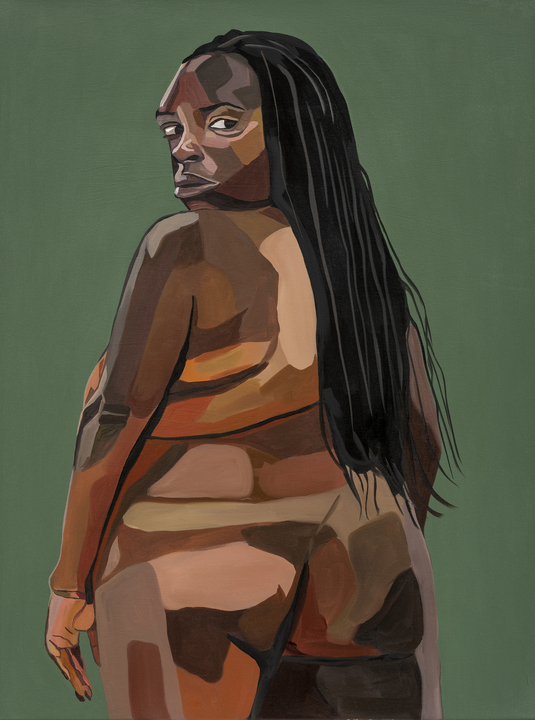
Do you feel like a stronger woman having gone through this process?
Yes, I definitely do. It’s been quite a journey. I felt really big in the studio because I was surrounded by all of these larger-than-life paintings. However, by painting myself and just through the act of depicting flesh, I realised there is a beauty in my body. I really enjoyed painting my folds and looking at my muscles and thinking, this is the body that made these works, so it’s fine as it is.
And how did you feel as the show opened to the public?
I was terrified to show them because one, they’re me, and two, it’s in Lagos. Plus, I was worried it was perceived as really self-indulgent, even though they are not completely about me - I just used my body as a starting point to study. But when I opened the doors, it felt amazing. They really looked like they were made for that space and the scale was just right, so I’m happy.
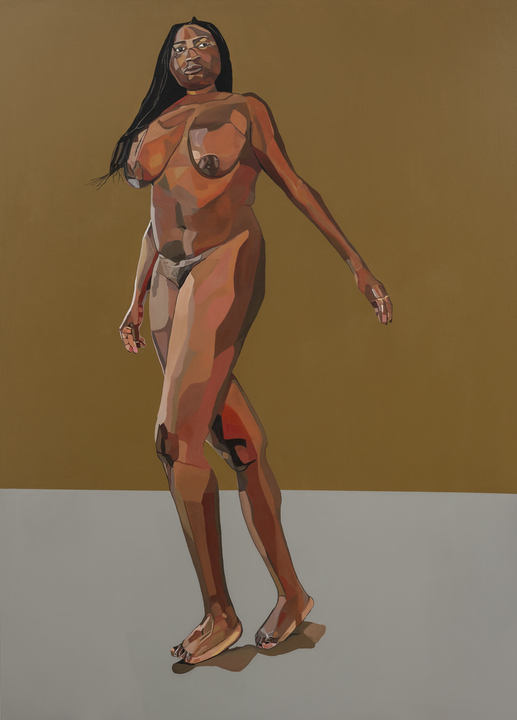
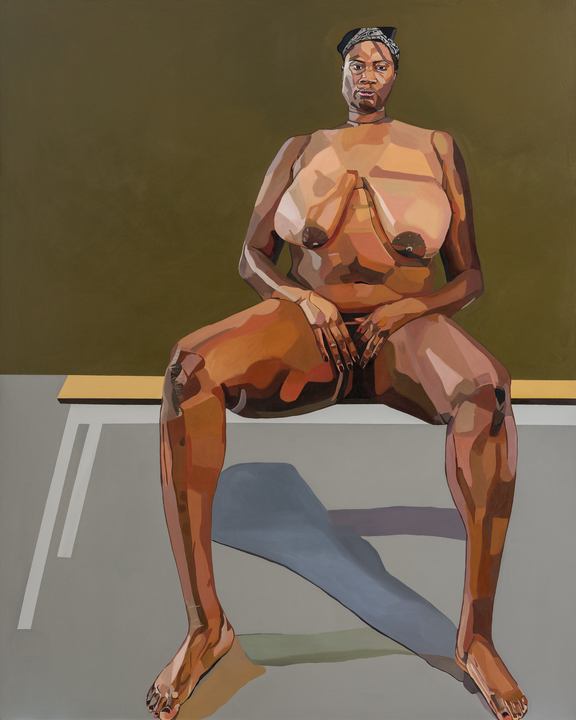
The show christened Tiwani Contemporary’s first gallery in Lagos. How significant is this move for the local art landscape?
For me, it was special to be in Lagos and to have my family see my work but also a real opportunity for my practice. It’s invaluable for local artists to have this purpose-built, contemporary gallery as most commercial galleries tend to be in converted homes. [Tiwani founder] Maria Varnava hopes to do some group shows for Lagos artists, which is important. There’s a really good energy in the Lagos art world right now and it feels like this is just the beginning.
Joy Labinjo: Ode to Olaudah Equiano, Chapter Arts Centre, Cardiff, 26 March – 3 July 2022 Joy Labinjo: Full Ground, Tiwani Contemporary, Lagos, until 7 May 2022 Joy Labinjo: 5 More Minutes, Art on the Underground, London, until November 2022
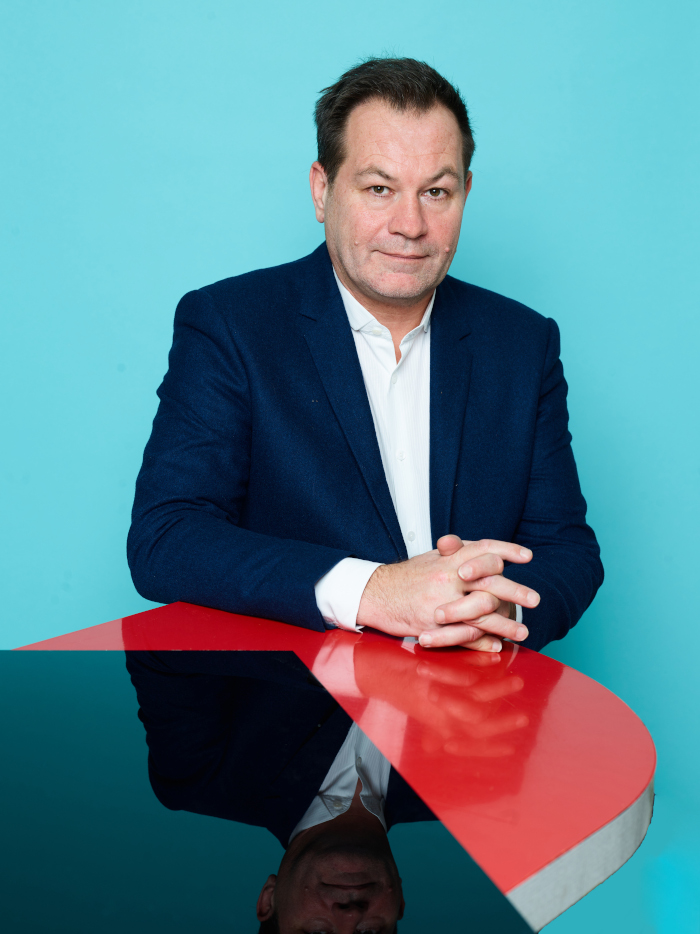

-min.jpeg)